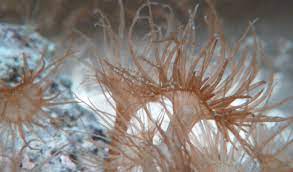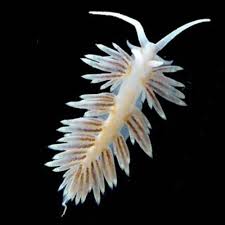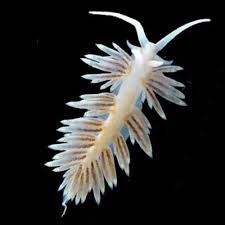
The Silent Invaders of Reef Ecosystems
Introduction
When we think of the stunning and diverse ecosystems found within coral reefs, we often picture vibrant corals and an array of marine life living harmoniously. However, lurking beneath the beauty of these underwater worlds, a tiny but formidable creature can wreak havoc on these delicate ecosystems – the Aiptasia anemone. In this blog post, we will explore the impact of Aiptasia on reef ecosystems and why eradicating them can be such a challenging task.
Aiptasia Overview
Taxonomy and Classification
Aiptasia, scientifically known as Aiptasia spp., belongs to the class Anthozoa, which includes true sea anemones. These creatures are often mistakenly referred to as “pest anemones” due to their detrimental effects on reef health.
Morphology and Reproduction
Aiptasia anemones have a simple yet effective structure. They possess a tubular body with tentacles covered in stinging cells called nematocysts. Their reproductive capabilities are astounding; a single anemone can rapidly multiply both sexually and asexually, making them prolific colonizers.
Distribution and Habitat
Aiptasia anemones can be found in tropical and subtropical waters around the world, often hiding in crevices or attaching themselves to substrates. Their adaptability allows them to thrive in a wide range of reef environments.
Effects of Aiptasia on Reef Ecosystems
Competition for Space and Resources
One of the most significant impacts of Aiptasia is its ability to outcompete native corals for space and resources. They can quickly colonize areas, preventing coral growth and diversity.
Allelopathy and Chemical Warfare
Aiptasia employs chemical warfare by releasing toxins into the surrounding water, damaging neighboring corals and organisms. This allelopathic behavior can lead to a decline in overall reef health.
Habitat Alteration
Aiptasia’s rapid colonization can alter the physical structure of the reef, causing damage and changing the composition of the reef community. This alteration disrupts the delicate balance of the ecosystem.
Impact on Reef Health
Overall, Aiptasia contributes to reduced biodiversity within reef ecosystems. Weakened by Aiptasia’s presence, reefs become more vulnerable to additional stressors such as rising sea temperatures and pollution.
Challenges in Aiptasia Eradication
Resistance to Physical Removal
Aiptasia anemones are resilient to physical removal methods because they can regenerate from small fragments and retract their tentacles, making them difficult to fully eliminate.
Chemical Control
Common chemicals used to control Aiptasia are often ineffective and can harm other organisms in the reef ecosystem.
Biological Control
While natural predators of Aiptasia exist, they may not be readily available or effective enough for complete control.
Genetic and Behavioral Adaptations
Aiptasia’s rapid reproduction and genetic diversity enable them to adapt quickly to control methods, rendering some approaches ineffective in the long term.
Strategies for Aiptasia Management
Integrated Pest Management (IPM)
Combining multiple control methods and regularly monitoring reef systems can help mitigate Aiptasia’s impact.
Selective and Targeted Removal
Careful mechanical removal methods can reduce harm to native corals while targeting Aiptasia specifically.
Biological Control Research
Berghia Nudibranchs: Nature’s Tiny Aiptasia Assassins

Berghia nudibranchs, often referred to as “Aiptasia-eating nudibranchs,” are remarkable marine creatures that have earned a reputation as nature’s allies in the battle against Aiptasia anemones. These small, sea slug-like animals belong to the family Aeolidiidae and are found in tropical and subtropical seas worldwide. What sets Berghia nudibranchs apart is their insatiable appetite for Aiptasia anemones, making them an invaluable asset in the eradication of this problematic coral reef pest.
Berghia nudibranchs have become renowned within the marine aquarium community for their incredible efficiency in controlling Aiptasia populations. These nudibranchs are voracious predators, equipped with specialized structures known as cerata that contain nematocysts – the stinging cells of Aiptasia’s prey. By grazing on Aiptasia the Berghia nudibranchs not only reduce the number of these pest anemones. They also help restore the delicate balance of reef ecosystems by sparing native corals from the harmful competition and chemical warfare waged by Aiptasia. Their eco-friendly approach to Aiptasia control has made them a sought-after solution for reef enthusiasts and conservationists alike, offering a glimmer of hope in the ongoing battle to protect and restore coral reefs.
Sustainable Practices
Preventing the introduction and spread of Aiptasia through responsible aquarium practices and conscientious diving can help protect reef ecosystems.
Conclusion
In the hidden world of coral reefs, Aiptasia anemones represent a significant threat to the delicate balance of these ecosystems. Their capacity to outcompete native corals and engage in chemical warfare. This poses a formidable challenge to reef conservationists.
As we strive to protect and restore our precious coral reefs. It is crucial to develop effective strategies for Aiptasia management. By combining various approaches, and conducting ongoing research to identify potential biological controls. If we take proactive measures and promoting sustainable practices. We can hope to mitigate the impact of these invaders on our underwater wonders. This will ensure we preserve their beauty for generations to come.


